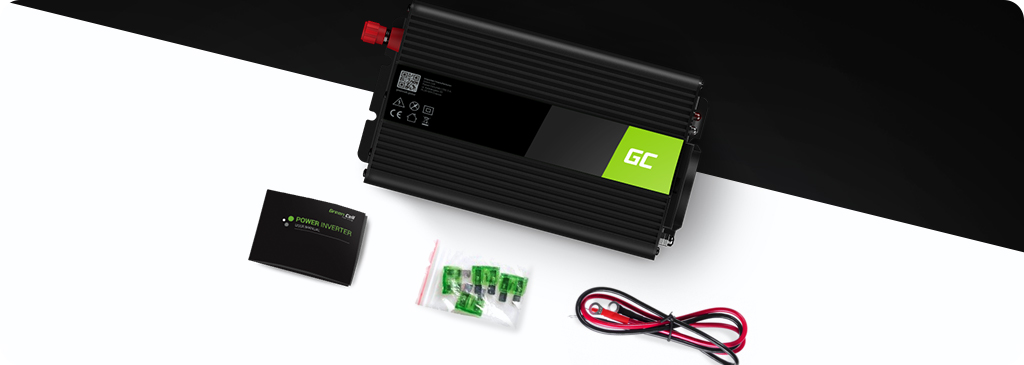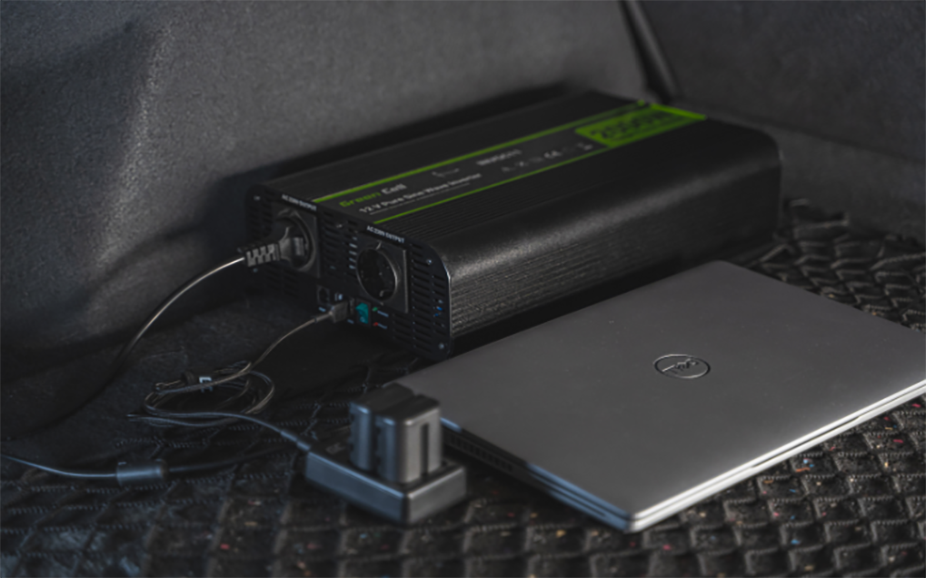Which inverter should I choose?
There is a good chance that you are looking for an inverter, because there is a reason that you have come to this site. Choosing the right inverter is essential if you want to realize the right power supplies for your home. So this is really not something you should make mistakes with. Fortunately, you don't have to face it alone. In this article we have collected a few things for you about choosing a good inverter. With this handy information it is a lot easier to arrive at the inverter that suits what you are looking for.
Different types of inverters
In a moment we will discuss the most important factors that you should always check when buying a good inverter. But before that happens, we would do well to take a look at the different types of inverters that are currently available. To make it a little easier for you, we have listed the most common types of inverters below for you.
- Portable Inverters
For not too great power needs, it is possible to opt for the portable inverters. These vary in size from 100 to 2,000 watts or more and are useful, for example, in the shed to use your tools. These portable inverters are intended for places with no utility electricity. They are used to convert DC power from a battery that is either charged by your vehicle's engine or by a separate source such as a solar panel or generator.
- Household Inverters
Most of the inverters sold today are for use in domestic energy systems. In the past, inverters were built for remote areas where there was no commercial power available. Today, however, most inverters in developed countries are used for on-grid applications to produce clean and renewable energy. This is then distributed to public power grids. The Utility-intertied system without battery backup is the simplest and cheapest option for those looking for an inverter. All you need for this system are solar electrical modules and an inverter. This is connected to the main panel of your house. A disconnector and a separate meter are also used.
- On grid inverters
Within the household inverters, we again make a distinction between 'off-grid' and 'on grid' inverters. The off grid inverters are really specially intended for the remote places where there is no power supply available. On-grid inverters, on the other hand, are divided into two further categories. These are the inverters without battery backup and the inverters with battery backup. The type of inverter you need is based on whether or not utilities are available in your location to charge the backup battery.

Choosing the right inverter – what to keep in mind?
The above information will help you to know better which types of inverters are actually available. What you just don't know yet is what you should pay attention to when choosing a good inverter. Below we have made a selection of the most important factors that should always be considered when choosing the inverter. Without these factors you will never arrive at the inverter that suits what you are looking for, so it is really important to keep them at hand.
- The power requirement
The power requirement of your home or office determines the size of the inverter you want to use. This is the total load you want to run on your inverter as a backup. This is the most essential factor to consider, especially since an inverter is a pure power backup solution for your home. If you don't think about the power requirement, this can cause a power outage, among other things. What kind of electrical appliances do you plan to use in the event of a power outage? This is the sum of all electrical devices that you want to support. Think carefully about this and put it all together before you just choose an inverter.
- The volt-ampere rating (VA)
Based on the answer to the above question, you can determine the correct VA rating of an inverter. VA stands for volt-ampere rating of an inverter. It is the total amount of voltage supplied by the inverter to a group of devices. The best way to determine the correct VA rating is to divide the total power required in watts by the power factor of your home. This is generally 0.8. The VA rating of an inverter will always be higher than the required power measured in watts. This ratio of the required power is known as the power factor. This is the only way to determine the VA value of an inverter. For your home, the power requirement is in most cases no higher than 650 watts. This means that the required VA value for a suitable inverter is about 800 VA.
- The battery capacity
The last factor to consider is the battery capacity. This is indicated in the Ah value. The Ah value of a battery determines the amount of energy that a battery can store. The most common Ah values of a battery are 100, 120, 150, 180 and 200 Ah. The higher the Ah value, the stronger the battery. A total backup of power for 6 hours is 2,250 VA. This means that the battery value for that particular inverter must be 180 Ah. This is the simple setup that allows most consumers to buy the best inverter of their choice. Ultimately, the performance of the inverter depends on the battery. If the battery is low on power, it will not have the adequate amount of energy to run various electrical appliances during a power outage. So be aware of this if you are looking for a new inverter.

pure vs. modified sinus
When looking for an inverter it is also important to think about whether you choose a pure or a modified sine wave. There are some major differences between the two options. We have made it a bit easier by putting the most important information together:
- Modified sine wave – A modified sine wave is an inverter that creates an AC voltage that is not considered perfect. This is mainly due to the fact that the modified sine wave causes a lot of disturbing frequencies. These frequencies prevent the inverter from working with all devices. For important devices it is therefore not wise to opt for the modified sinus now that you run the risk that it will not work.
- Pure sine – In addition to the modified sine, we also know something like the pure sine. In contrast to the modified sine wave, it is possible to operate all types of devices with the pure sine wave. A pure sine wave is able to create an almost perfect AC voltage. This makes it a different device than the modified sine, because the pure sine can be used on everything.







